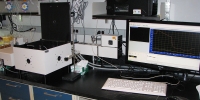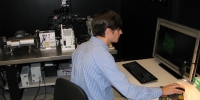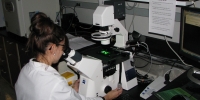McTips_2023
McTips 2023 - oldest at top (and probably intermittent additions - may take a while to fill up current empty cells).
|
|
|
20230616F section added: Multiplex multicolor, extremely high FRET efficiency by close proximity (and dipole orientations) of FP chromophore and HaloTag ligand (HTL) ... also some NanoLuc:furimazine based BRET with HT:HTL. Hellweg 2023 NCB - biosensors XFP-HaloTag high FRET BRET when on - general method development multicolor biosensors with large dynamic ranges Frei Johnsson Hiblot FLIM BLI |
|
20230616F section added: IBEX Imaging Community web portal ... IBEX is (re)iterative multiplex immunofluorescence from Ron Germain's lab, NIH. Leeson 20230608 addgene blog - IBEX Knowledge-Base - Data Resource for Multiplex Tissue Imaging - re Radtke 2022 NProt Germain Ce3D LiBH4
|
|
20230614W - listerv post below is self explanatory (other than my mentioning probably an HDD, with SATA-6 SSD, NVMe M.2 drives possibly benefiting too) From: Confocal Microscopy List <CONFOCALMICROSCOPY@LISTS.UMN.EDU> * GM note1: may work on all drives (HDD, SATA-6 SSDs, NVMe M.2 SSDs, RAID arrays), or might simply be effective for HDDs. * GM note 2: reminder - defragmentation is only for HDDs (simple HDDs), not SSDs or RAID arrays of any type. * GM note 3: alsu sueful to run Glary Disk cleaner (ort similar software - I use an old version, circa 2016, that John Gibas, my predecessor downloaded and liked because it did not also install anoying additional software). I also install Glary Undelete on Windows PCs - hopefully will never need this Glary Undelete, but best to have in advance. |
|
20230120F Immunofluorescence microscopy best practices (in GM's opinion) - 20230120F email ... for JHU colleagues Assumes: PFA fixed cells or tissue sections on slide … image on confocal (Leica SP8, Olympus FV3000RS), FISHscope (or other widefield microscopes) etc. Recently purchased primary and secondary antibodies, aliquoted and stored correctly (if older antibodies: verify working well on small scale test before spending a lot of time and money on big experiments).
Consider using “Glycine quench” (re: Varsha Singh, G.I.: 100 mM glycine, 30 minutes [gm note: see literature for pH and/or do expt and report optimal pH … may also act as “antigen retrieval”]) to “quench” paraformaldehyde “dangling” from lysines (some expts may in turn be impacted by use of glycine). If using glutaraldehyde (“glut”) or “glut:PFA” mixture, very likely need glycine quench for the “glut”.
Potential refinement: quantitation vs F-actin (or total actin, total tubulin, histone, etc): Consider labeling with Alexa Fluor 647-phalloidin or AF647-anti-actin as an additional channel, and using the pixel and region(s) of interest to quantify in comparison to your experimental channels (i.e. AF555 or AF568 “orange”; AF488 “green”, DAPI DNA counterstain … do not assume that DAPI intensities are quantitative). Analogy is to using (total) “Actin” band as loading control in “quantitative” Western blots (some researchers think that “quantitative western blot” is an oxymoron).
More tips: “1 Day” = 24 hours (or longer) for this email write-up. For formal protocols and manuscripts, I recommend lab protocol time in hours (or minutes if under 1 hour). One reason: the term overnight is sloppy and varies with latitude (equator vs Baltimore summer and winter vs poles 6 months each). Whyte 2022 CurrProt “do more with less” … lower concentration primary antibody can result in more binding (example 1:100 for 15 min vs 1:1000 for 24 hours … did not test 48 hours or longer). Direct label antibodies in flow cytometry. May also apply to concentration and staining time for secondary antibodies. Richard Burry 2010 Immunocytochemistry textbook: 7 washes, keep specimen submerged all the time [1 second transfer to new coplin jar should be ok] (GM has eBook and one page PDF “flyer”). GM is a big fan of Brilliant Violet (BV421, BV570, etc) direct label antibodies (BD Biosciences; BioLegend) and similar reagents (Brilliant Ultraviolets for microscopes like FISHscope with ~360nm light source; SuperBrights, more). GM encourages buying new secondary antibodies. GM suggests if buying new secondary antibodies (and if “zoo” of species combinations ok) to purchase “Alexa Fluor Plus” (AF488, AF555, AF647 available, anti-mouse, anti-rabbit), 3x brighter due to better linker, ~1.x more expansive than equivalent “standard AF” 2ndAb. GM is a big fan of tyramide signal amplification (ThermoFisher Alexa Fluor antibodies kits; Akoya Biosciences “Opal”, Bio-Techne/Tocris, Biotium, etc). Almost always should use lower concentration primary antibodies (saving money) compared to standard primary + labeled secondary antibodies. GM recommends PeroxAbolish (BioCare Medical) for “killing” HRP between rounds when multiplexing (Takahashi … Ichii 2012 Cell Transplant. DOI: http://dx.doi.org/10.3727/096368911X586747 ... were at UMiami with GM at the time). “Glycine quench” (pH 2? 30 min?) may also be useful to “strip” antibodies for iterative label-image-unlabel-repeat multiplexing. There are many multiplex methods out there, a few examples: CycIF, IBEX (Ron Germain, NIH), Akoya CODEX, ChipCytometry/Zellkraftwerk. There are also many ways to destroy fluorophores between rounds (see IBEX papers for some methods, and a few fluorophores resistant, enabling fiduciary markers between rounds).
Think ahead: imaging dishes should have unique labels with lid matching dish, since there is always a risk of confusing lids.
Antibodies go bad over time (depends on antibody, storage details … be aware sometimes tubes get left out overnight or over weekend and then put back in refrigerator … “Trust, but verify” (aka, don’t trust) your lab mates.
Douglas Macarthur: “old soldiers never die, they just fade away” (DM is long dead, so first part is wrong). GM: “Old antibodies die, please throw them away”. |






